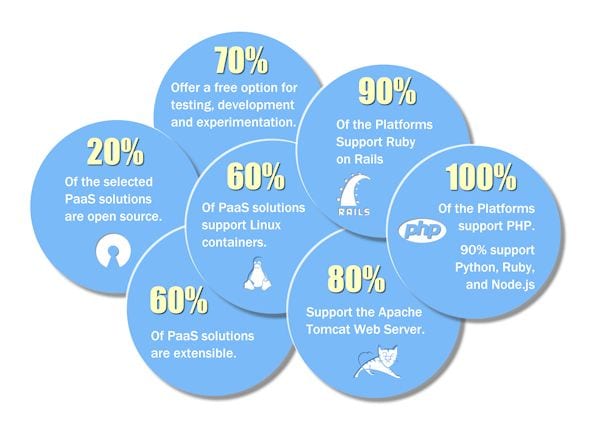New From Solutions Review: The PaaS Comparison Matrix

 The enterprise is in the middle of an explosion of growth in mobility and data. The old, insular model for developing ‘in-house’ is showing its age—in many cases on-premise IT simply can’t keep up. For the last decade, cloud computing has been gaining traction, and now, it’s finally set to surpass on-premise solutions in IT spending.
The enterprise is in the middle of an explosion of growth in mobility and data. The old, insular model for developing ‘in-house’ is showing its age—in many cases on-premise IT simply can’t keep up. For the last decade, cloud computing has been gaining traction, and now, it’s finally set to surpass on-premise solutions in IT spending.
In the past, enterprise cloud adoption was primarily focused on software as a service (SaaS) and infrastructure as a service (IaaS) offerings, but lately there’s been an increasing call for enterprise adoption of the middle sibling in the cloud family: platform as a service (PaaS).
PaaS is a model of cloud computing in which a vendor provides the user with the hardware and software tools necessary to create, deploy, and manage applications at scale, via the internet, as a service.
PaaS eliminates the complexity and cost of buying, configuring, and managing the hardware and software needed for on-premise application development and reduces time-to-value compared to IaaS by greatly simplifying configuration and deployment.
But the PaaS landscape is evolving in real time—finding and deploying the right solutions can be a daunting challenge. At Solutions review, we believe that the best approach to choosing a PaaS solution is to start with the people who will be using it: your developers. To that end, we’ve created the PaaS Buyer’s Matrix Report, a visual reference and summary of the top 10 best-of-breed PaaS Solutions.
In Solutions Review’s PaaS matrix, you’ll find the top 10 PaaS solutions: Amazon Elastic Beanstalk, Microsoft Azure, Centurylink Appfog, Cloudcontrol dotCloud, Engine Yard, Google App Engine, IBM Bluemix, Pivotal Cloud Foundry, Redhat Openshift, and Salesforce Heroku.
Each solution is compared across five categories specifically designed to help businesses and developers choose the solution that best fits their needs, whether those needs are a runtime, software stack, services offered, or macro issues such as data residency.
Additional Resources:
In my recent post, Explaining the Cloud: What the Heck is PaaS, Anyway? I break down what platform as a service (PaaS) is, why it’s important, its components, and its benefits.
Foggy on your cloud jargon? We’ve got you covered. Solutions Review’s A to Z cloud computing IT glossary has definitions for 50 of the most popular cloud computing terms and acronyms.
Widget not in any sidebars





















